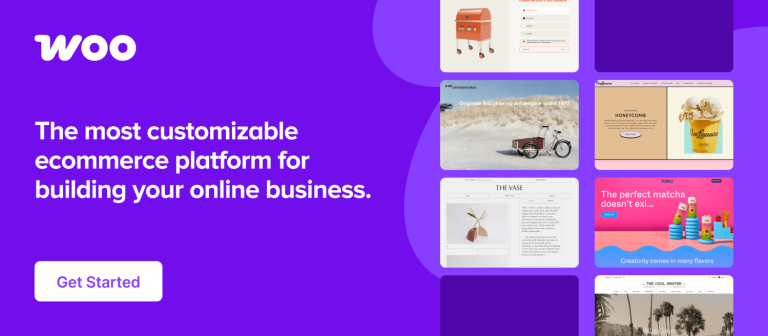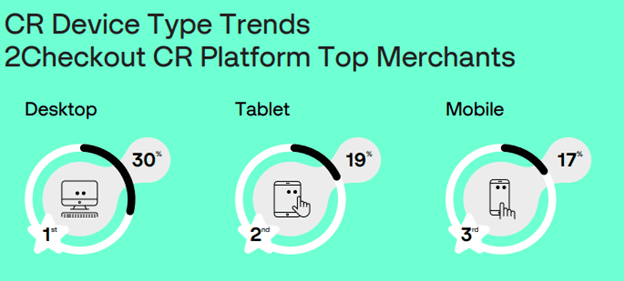This guide is designed to help financial institutions of all sizes navigate the unique challenges of increasing visibility in Google Search — from local credit unions and solo advisors to national investment firms and fintech platforms. We’ll walk through practical strategies to help you earn trust, demonstrate expertise, attract qualified leads, and stay compliant.
The tactics are broadly applicable, but how you apply them will depend on your business model. A local firm might focus on community-driven content and local SEO, while a digital-first platform might lean into educational resources and national visibility.
To write this guide to medical SEO, I interviewed eleven experienced finance SEOs:
- Elie Berreby, Senior SEO strategist, Semking.com
- Rob May, Director & Freelance SEO Consultant, Rob May SEO
- Ryan Chilton, Senior SEO & Digital Marketing Specialist, Digital Surfer
- Garit Boothe, FinTech SEO Consultant, Garit Boothe SEO Consulting
- Michael Sandford, Account Director, The SEO Works
- Molly Flynn, SEO Pod Leader, The SEO Works
- Ashley Jay Seager, Digital Marketing Manager, Moneyfactscompare.co.uk
- Alex Whyles, Freelance SEO consultant with over 16 years in SEO
- Victor André Enselmann, Founder, Modeva.dk
- Despina Gavoyannis, Senior SEO, Ahrefs
- Josh Spies, Chief Dragon, Dice Dragons (previously Moneybarn.com)
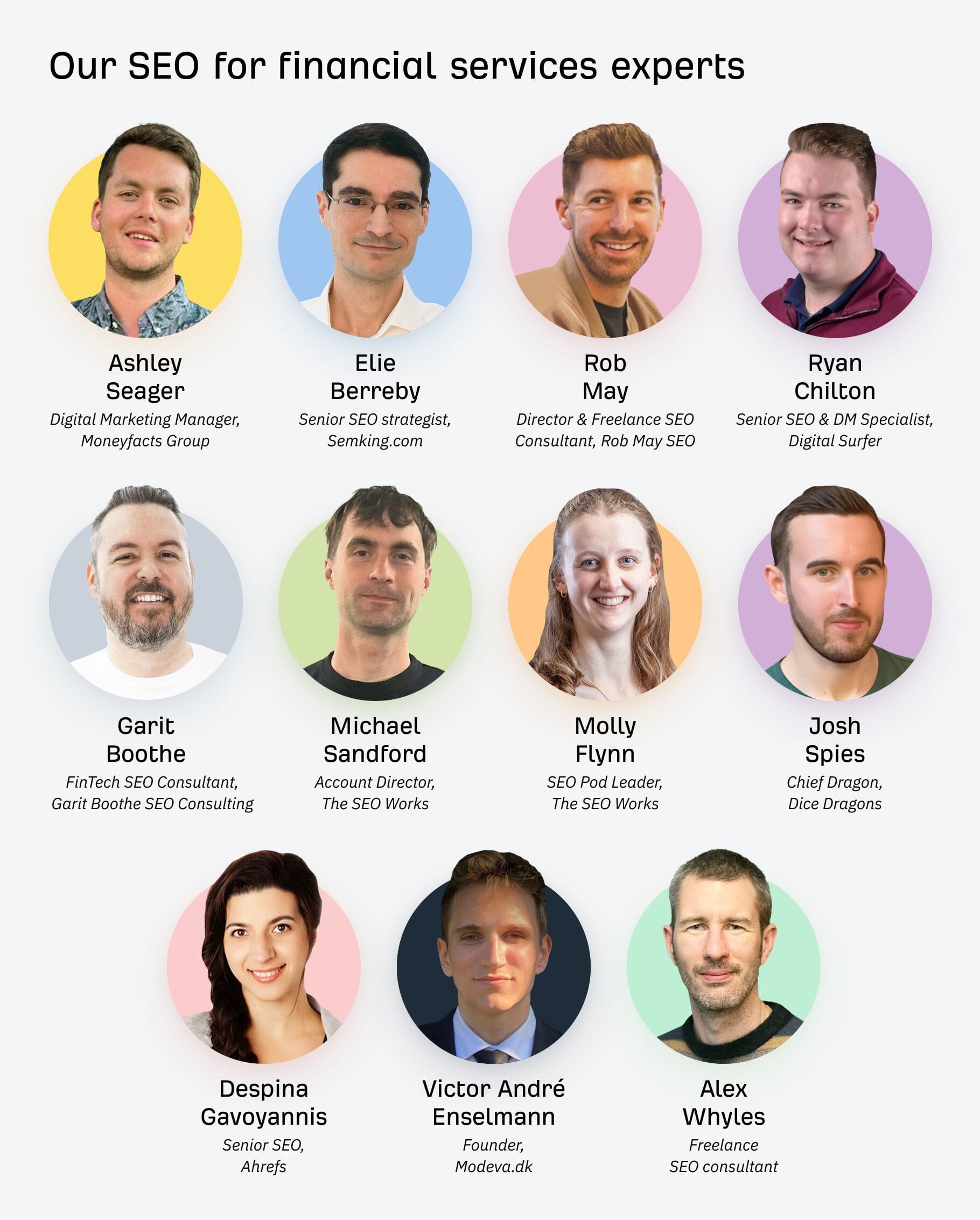
Author credentials are just one piece of the trust puzzle. To really build credibility, your entire website should reflect it. Start by showcasing ratings and reviews from trusted third-party platforms like Clutch, Expertise.com, and the Better Business Bureau.
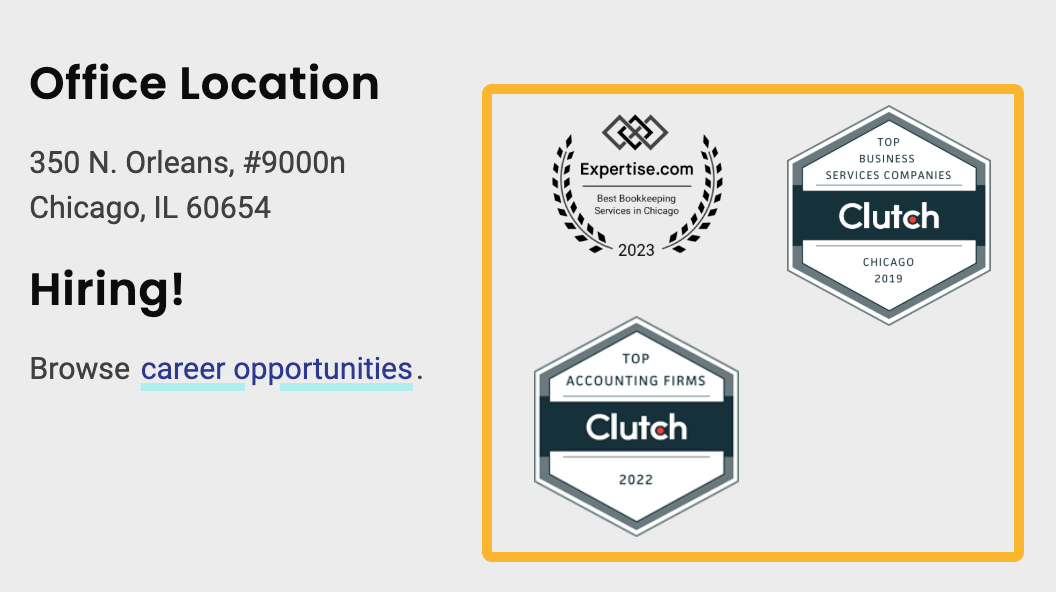

Be upfront about your regulatory status, too. Prominently display statements like “Authorized and regulated by the FCA” or “Member FDIC” in your footer and on relevant product pages.


You can also take it a step further by dedicating space on your About page (or a separate compliance page) to explain your credentials, licenses, and code of ethics. This About page from a tax advisor firm in Chicago is a good example.


And don’t forget the basics — things like HTTPS and visible security badges signal that you take privacy and security seriously, which is critical when you’re dealing with sensitive financial information.
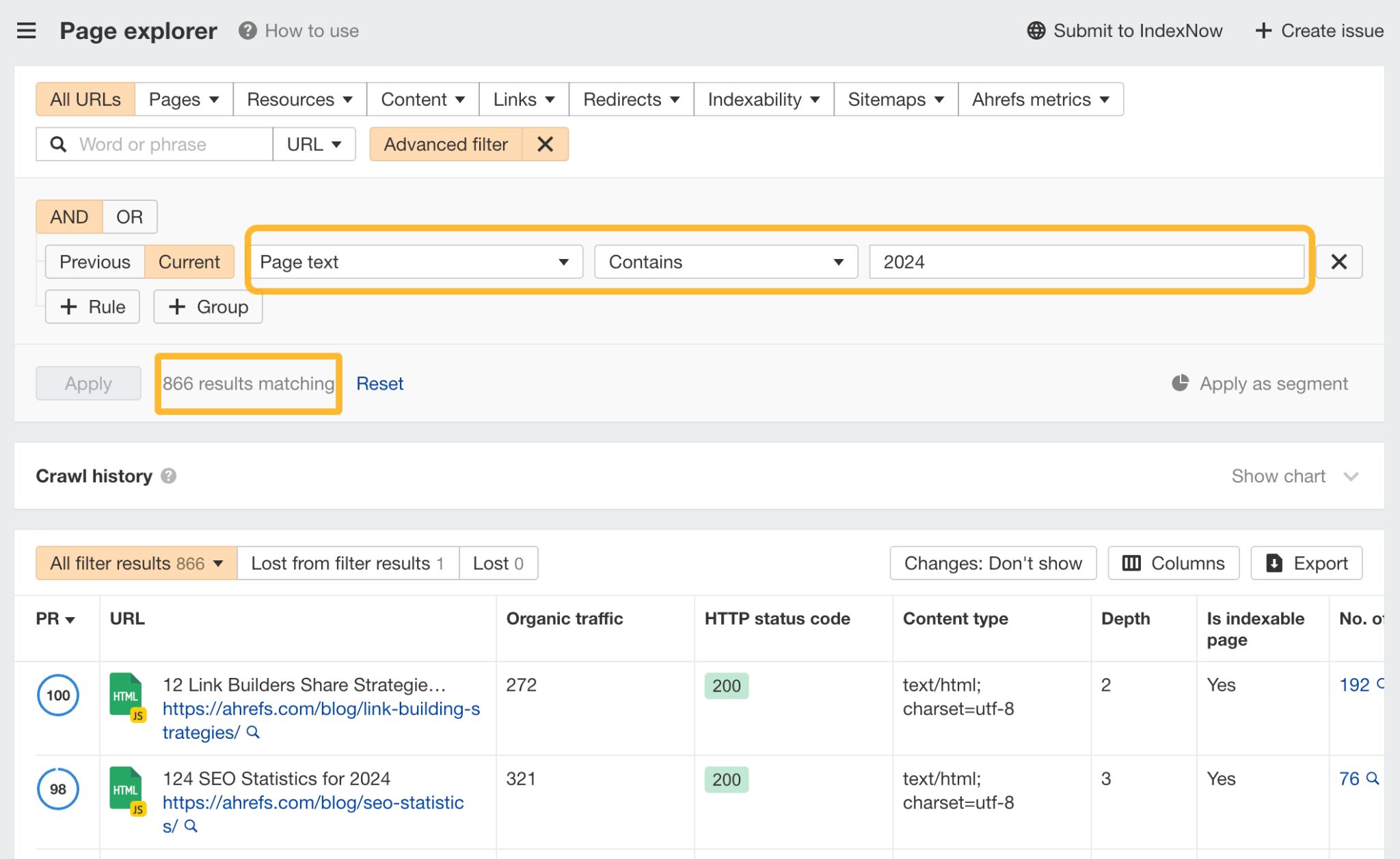

Others avoid AI entirely when it comes to financial content. Their concern? Accuracy, compliance, and trust. AI can make confident-sounding errors, struggle with regulatory nuance, and ultimately put your reputation and legal standing at risk if the content misleads users.
For example, Elie Berreby warned: “AI-generated content is one of the fastest ways to drive a financial brand off a cliff.” He points to the high likelihood of “errors, inaccuracies, and hallucinations at scale,” especially in the context of YMYL topics where factual integrity is non-negotiable.
In my opinion, the bottom line is that human oversight is absolutely essential if AI is used at all. You can use this three-layer approach:
- AI generation: Start with a detailed prompt that includes clear guidance, compliance rules, and any relevant regulatory constraints. The more specific the input, the safer and more accurate the output.
- Expert editorial review: Have a qualified financial professional — someone with credentials like CFA or CFP — review and refine the content. They’re responsible for fact-checking, adding nuance, and ensuring the final piece meets a high standard of accuracy and clarity.
- Final compliance check: Before anything goes live, a compliance officer should review the content to make sure it aligns with all relevant regulations and legal requirements.
Start by identifying keywords directly related to your products or services. Use AI tools like ChatGPT to generate a list of relevant seed keywords. If you’re using Ahrefs, try the AI features in Ahrefs’ Keywords Explorer to brainstorm seed keywords and expand from there.
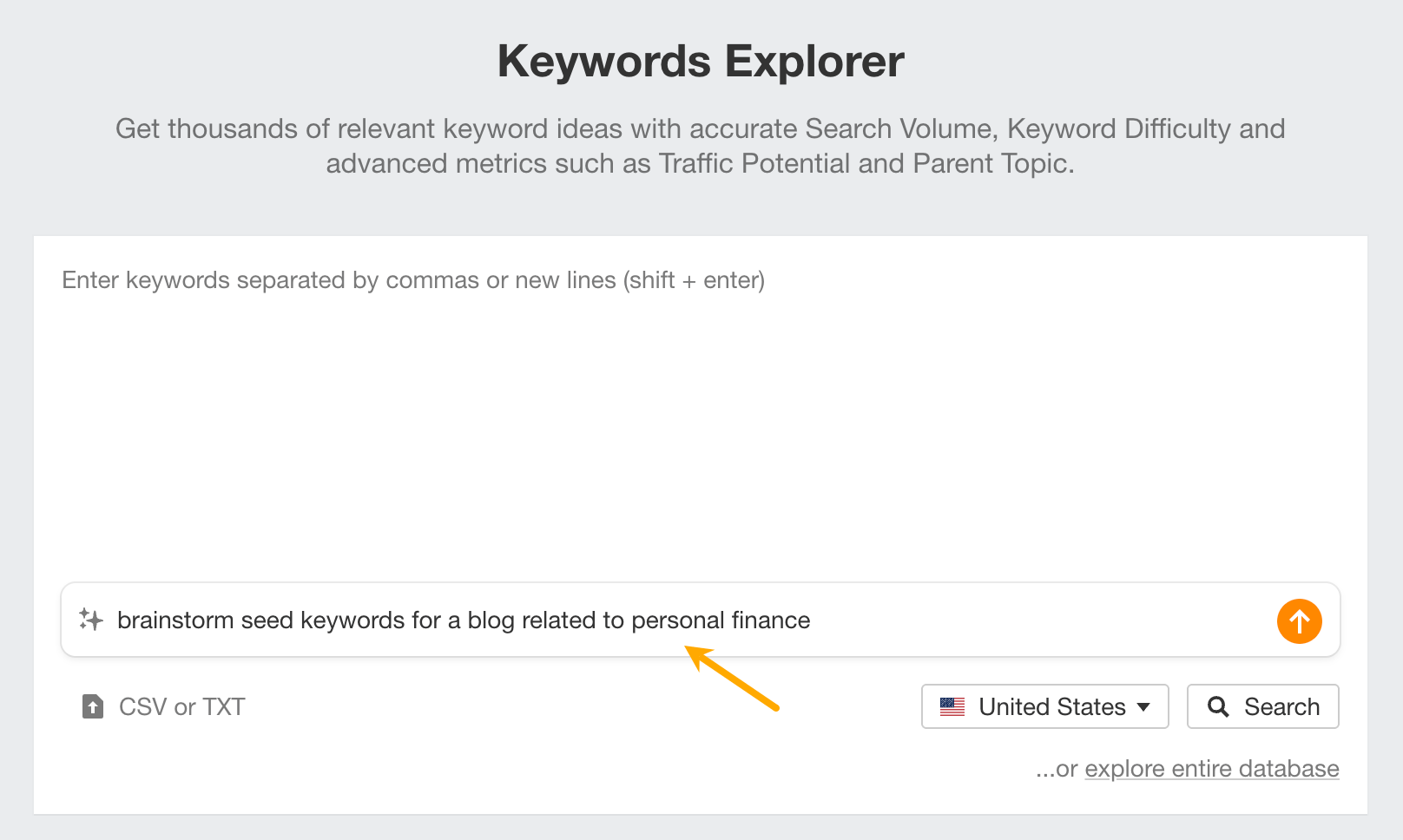

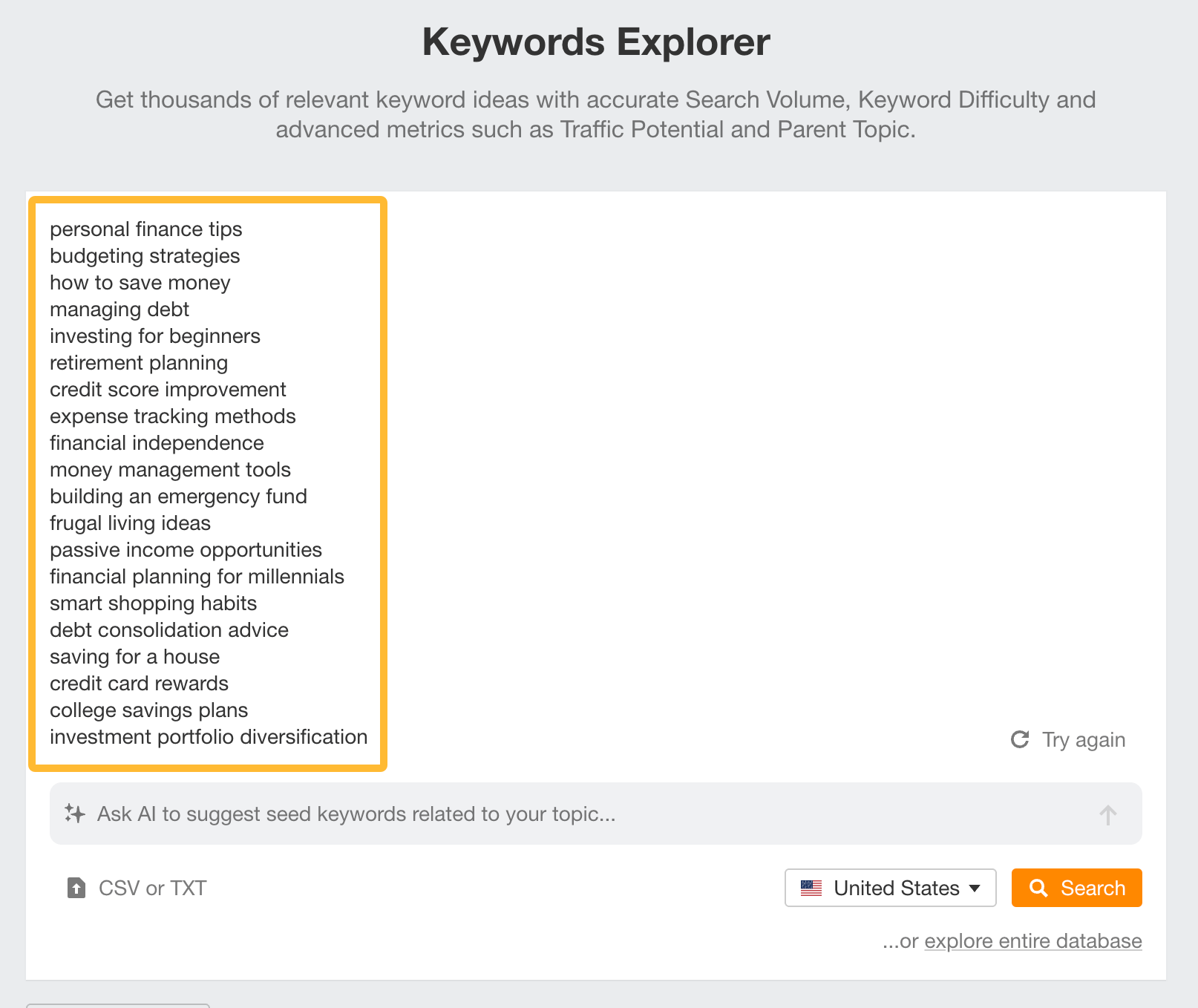

Next, go to the terms match and use the predefined filters to quickly uncover different types of keywords we discussed above, including long tail, low competition, local (if you own physical locations), questions, and comparisons.
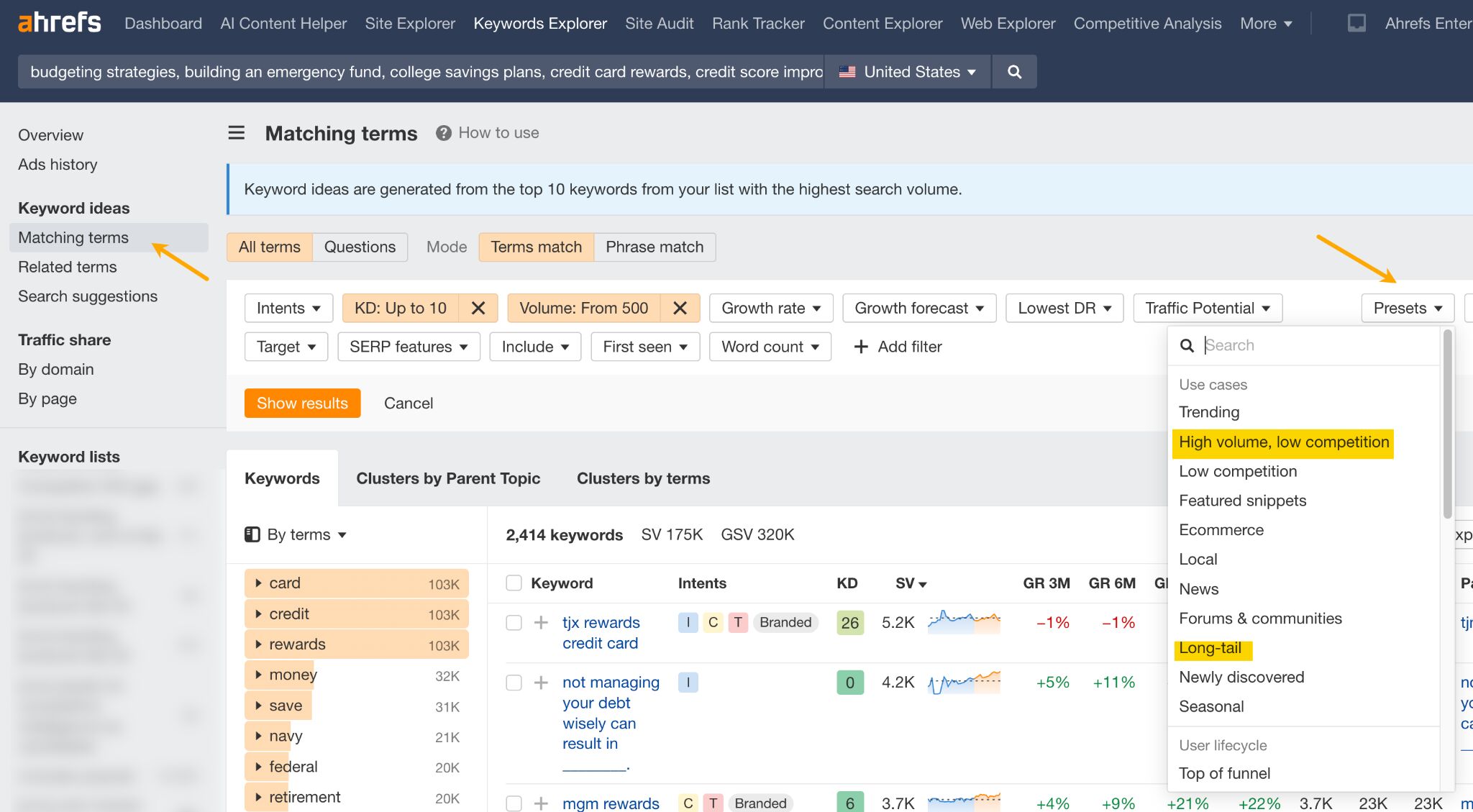

And here’s how to find keywords related to online calculators in a few seconds: enter “calculator” into the search bar of Keywords Explorer and click on the Matching terms report.
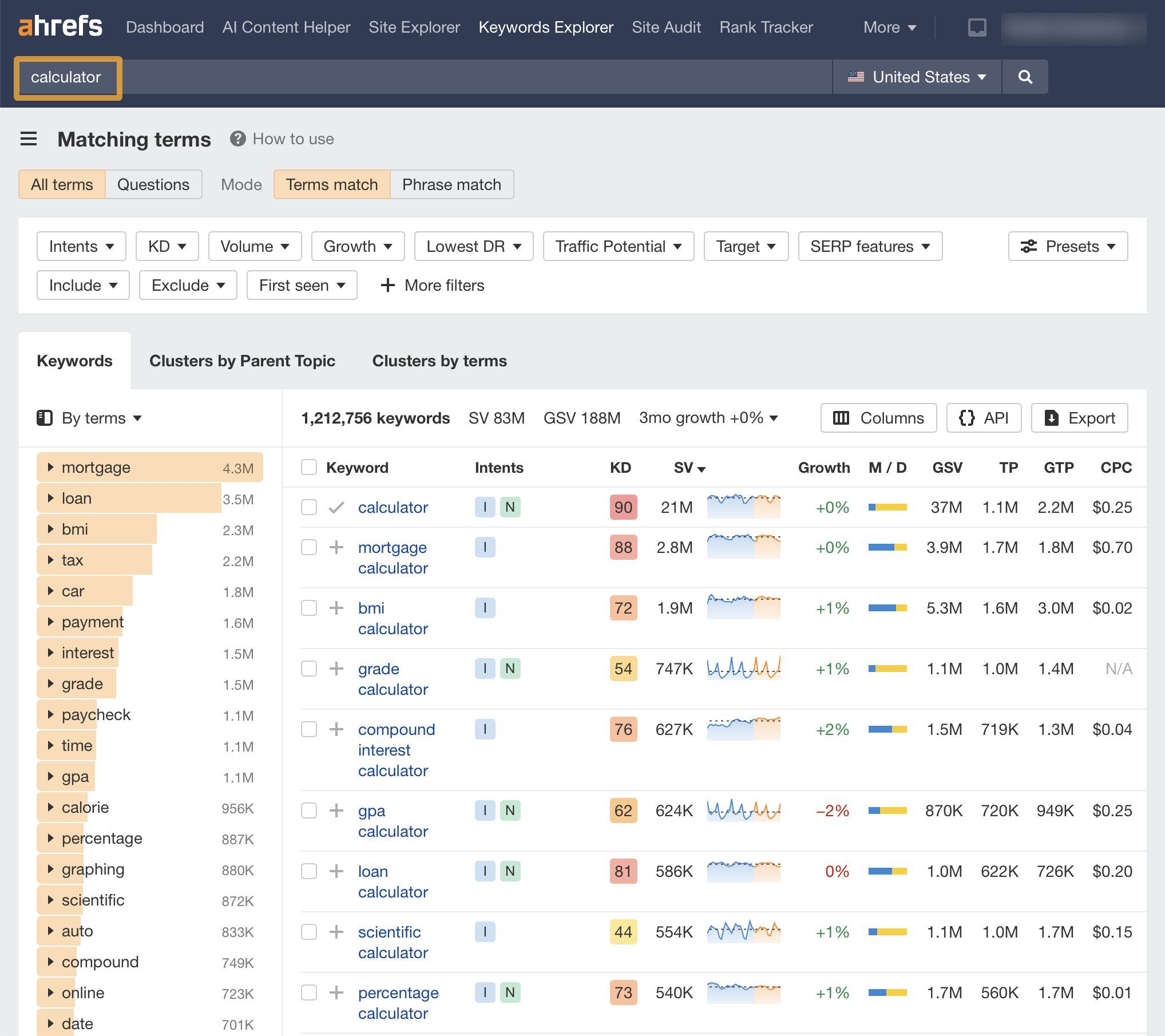

Further reading
Here’s how to earn backlinks that move the needle:
- Publish original research: Use proprietary data like loan applications, investment trends, or customer insights to create reports that others will want to cite. When your content becomes a go-to reference, backlinks follow naturally.
- Create comprehensive, expert-level guides: Cover complex financial topics in depth, offering clarity where others don’t. These types of resources often become link magnets within the industry.
- Build link-worthy tools: Interactive calculators, comparison tools, or financial planning resources that solve real problems are more likely to get shared and linked to.
- Optimize your business profiles: Claim and enhance your listings on trusted platforms like G2, Crunchbase, Capterra, and LinkedIn. Not only do these send trust signals to users, but they also give you high-authority backlinks that help boost your domain strength.
A real-world example of this is from Bankly, a Danish fintech startup. As Victor Enselmann shared, Bankly was up against established competitors with stronger backlink profiles. Here’s what his team did to close the gap:
- Bankly conducted a unique “debt analysis,” using nationwide data to identify Danish municipalities and regions with the highest and lowest debt per capita.
- To add credibility and depth, they secured quotes from well-known economists from high-level banks.
- The data story, enriched with expert commentary, was pitched to both local and national journalists.


This single Digital PR campaign resulted in over 20 links from high-authority media outlets — not an easy number to get in the Danish market, as Victor later explained to me. The high-quality backlinks earned through this targeted Digital PR effort were a major factor in Bankly achieving #1 rankings for highly competitive personal loan keywords (like lån penge, which translates to “borrow money,” or samlelån, Danish for “debt consolidation loan”) and driving significant visitor growth within roughly 1.5 years.
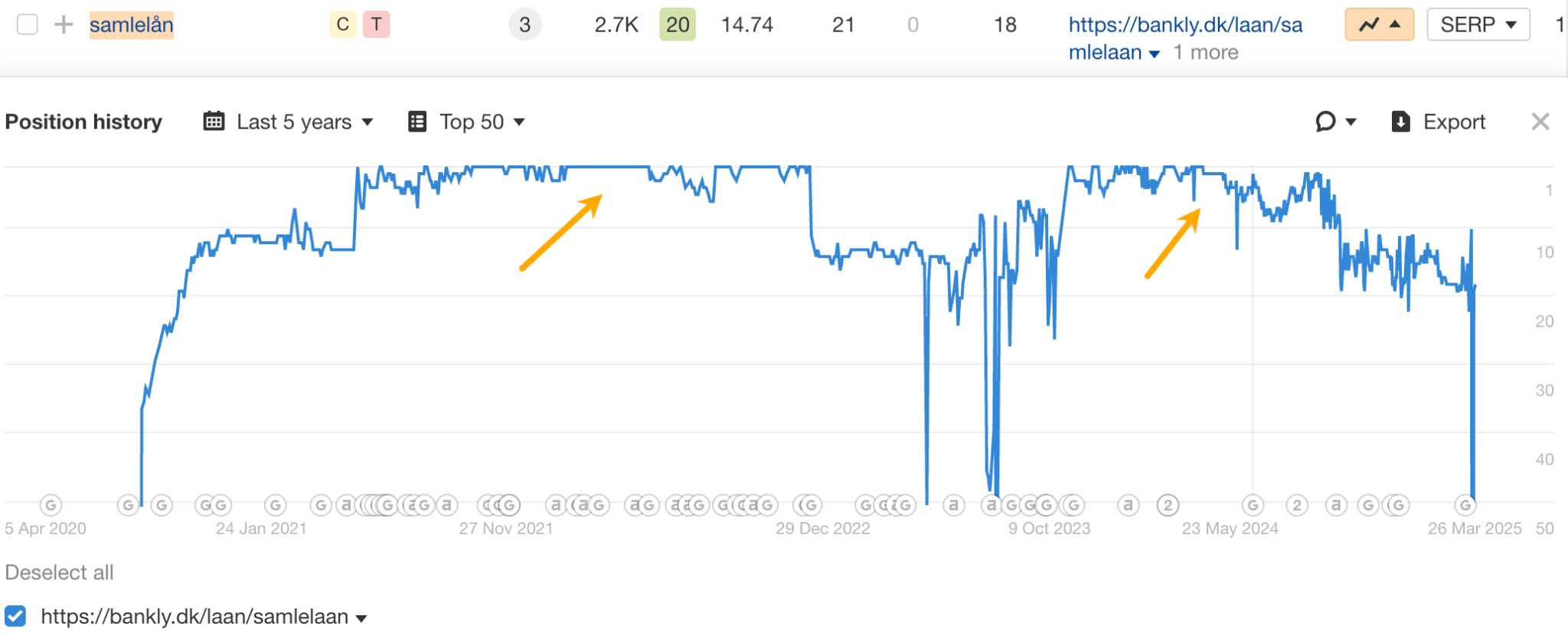

Further reading
If you’re aiming for featured snippets, you’ll want to focus on directly answering common questions, using headings that match search queries, and formatting answers in lists, tables, or short paragraphs. In essence, you have to match what’s already included in featured snippets but make it a bit better.
But AI Overviews go a step further. What appears to be working is adding new, unique information to your articles, i.e. information gain. For example, Google cites our only blog posts for almost, and entire section on crafting compelling content because we provided the most detailed, actionable tips.
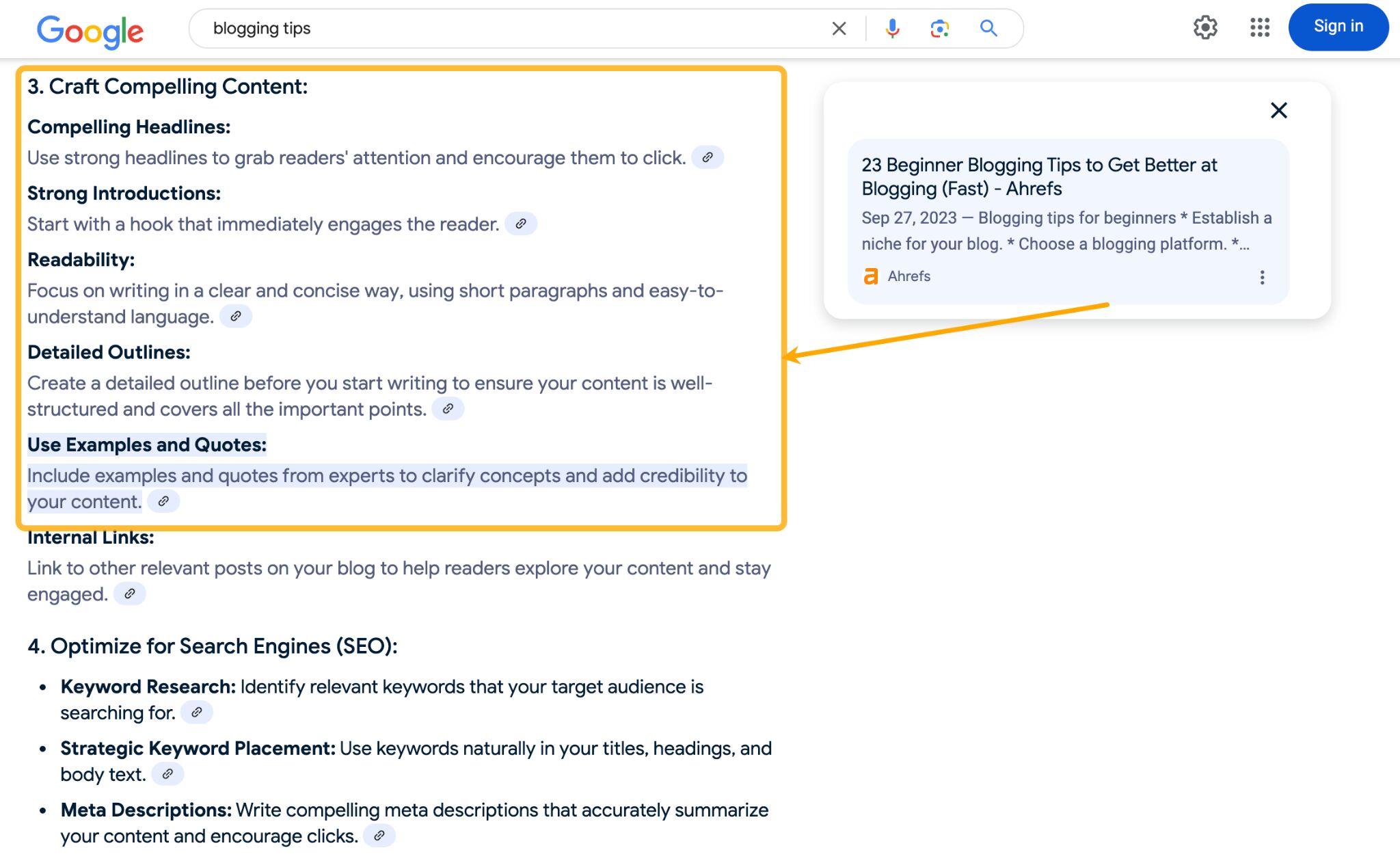

You can track your presence in both featured snippets and overviews using Ahrefs’ Rank Tracker.
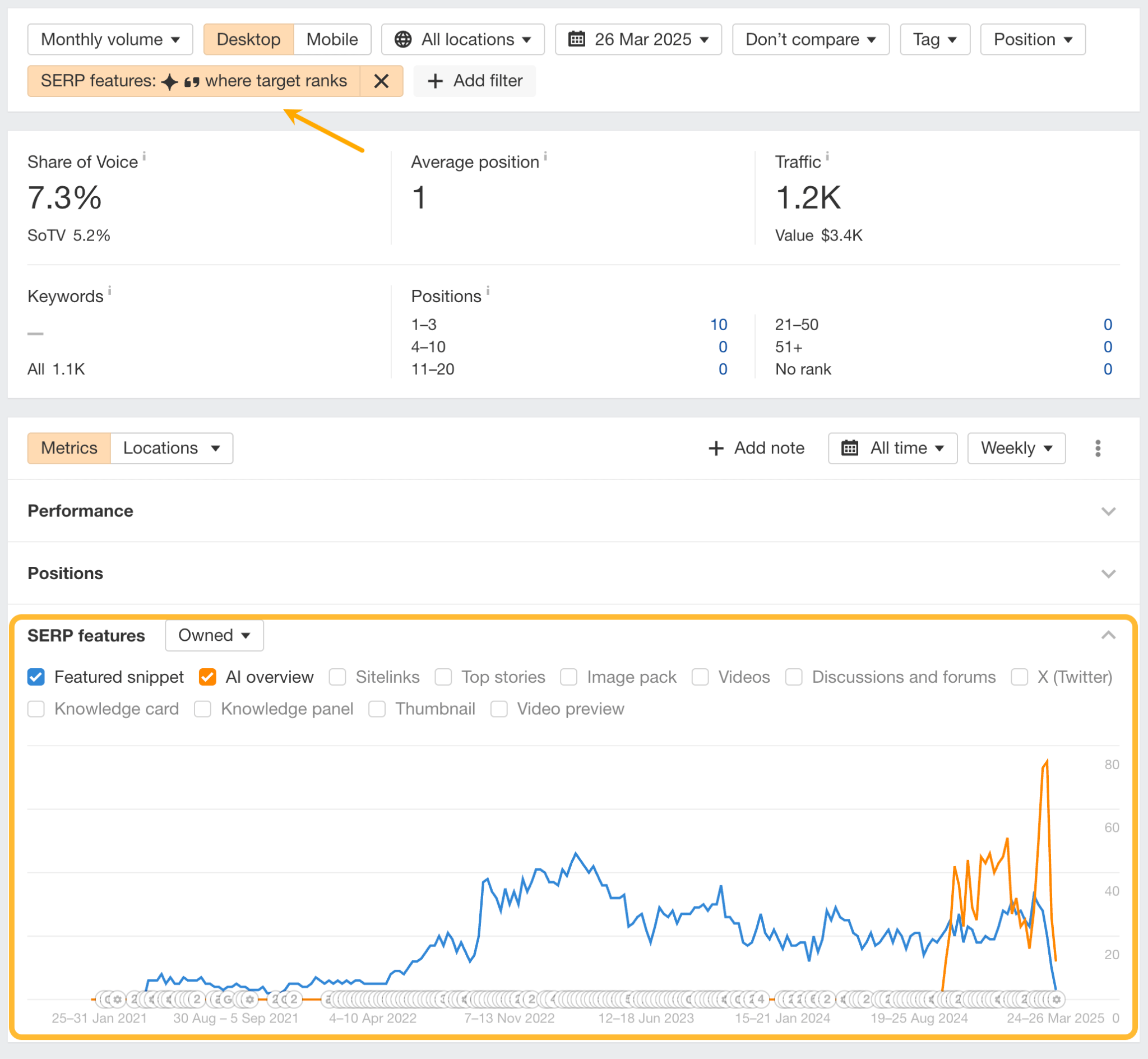

Run Google Ads for competitive keywords
For high-intent keywords that are tough to rank organically, paid search can give you immediate exposure while your SEO gains traction.
You can identify these keywords with three clicks in Keywords Explorer: insert your keywords, set Keyword Difficulty (KD) to 50 to display the more difficult half of the keywords, and sort the results by descending CPC (Cost Per Click).
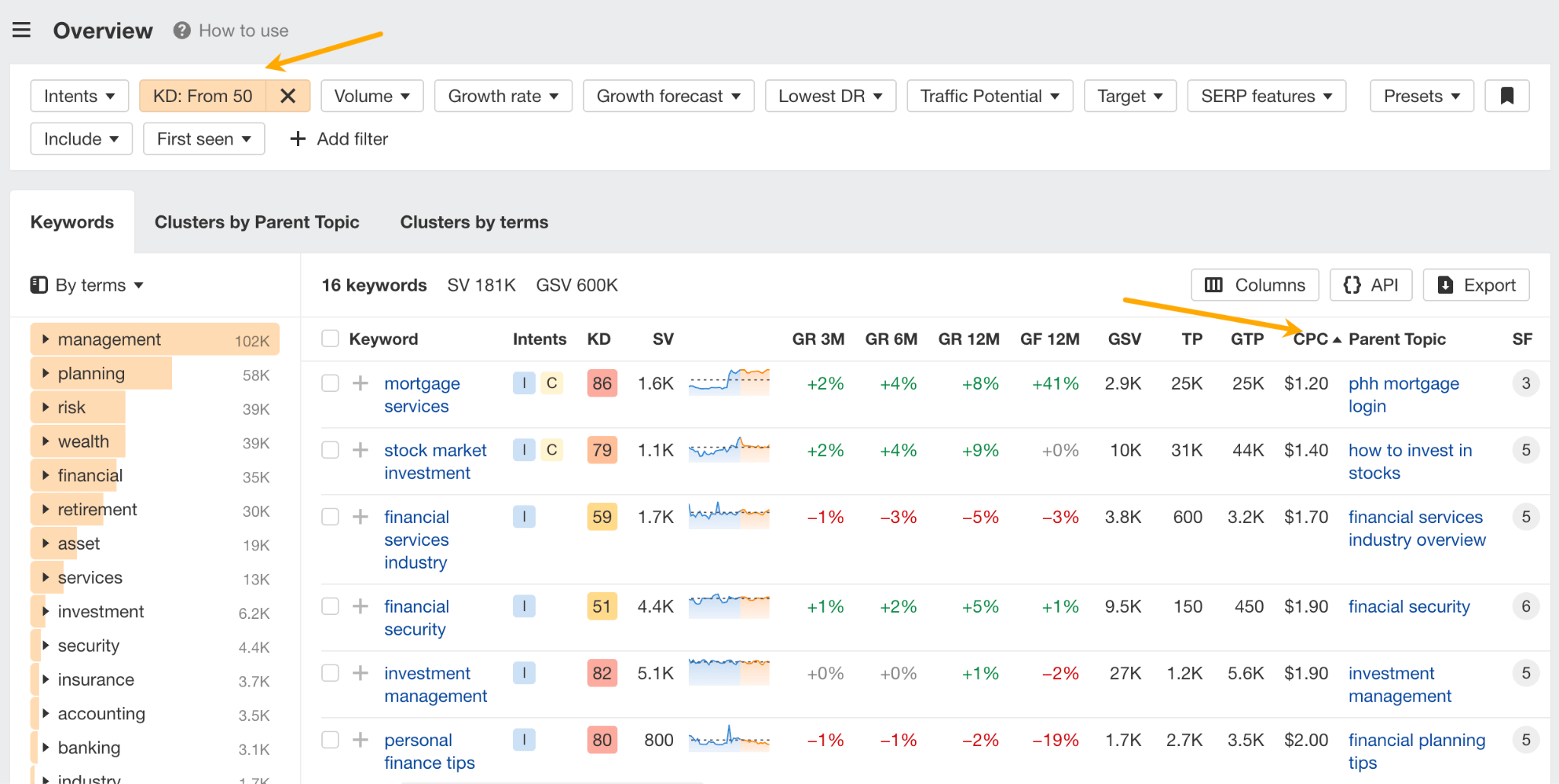

Claim your space on directories and review platforms
Start by claiming and optimizing your listings on platforms your audience actually uses and trusts. For local visibility means using Google Business Profile, Yelp, and the Better Business Bureau. For finance-specific trust, think bigger: Trustpilot, Bankrate, NerdWallet.
A well-maintained profile on these sites does a few things:
- Builds instant credibility: When potential clients see consistent information and positive reviews across multiple third-party sites, it reinforces that you’re legit.
- Improves local SEO: Verified listings with accurate NAP (Name, Address, Phone) info, business hours, and categories help you show up in map packs and local searches.
- Generates backlinks: Many directories offer high-authority dofollow or nofollow links to your site, which still help with visibility and crawlability.
- Feeds Google trust signals: According to several SEO pros in our expert interview, Google gives more weight to third-party trust signals like reviews and brand mentions when ranking YMYL content.
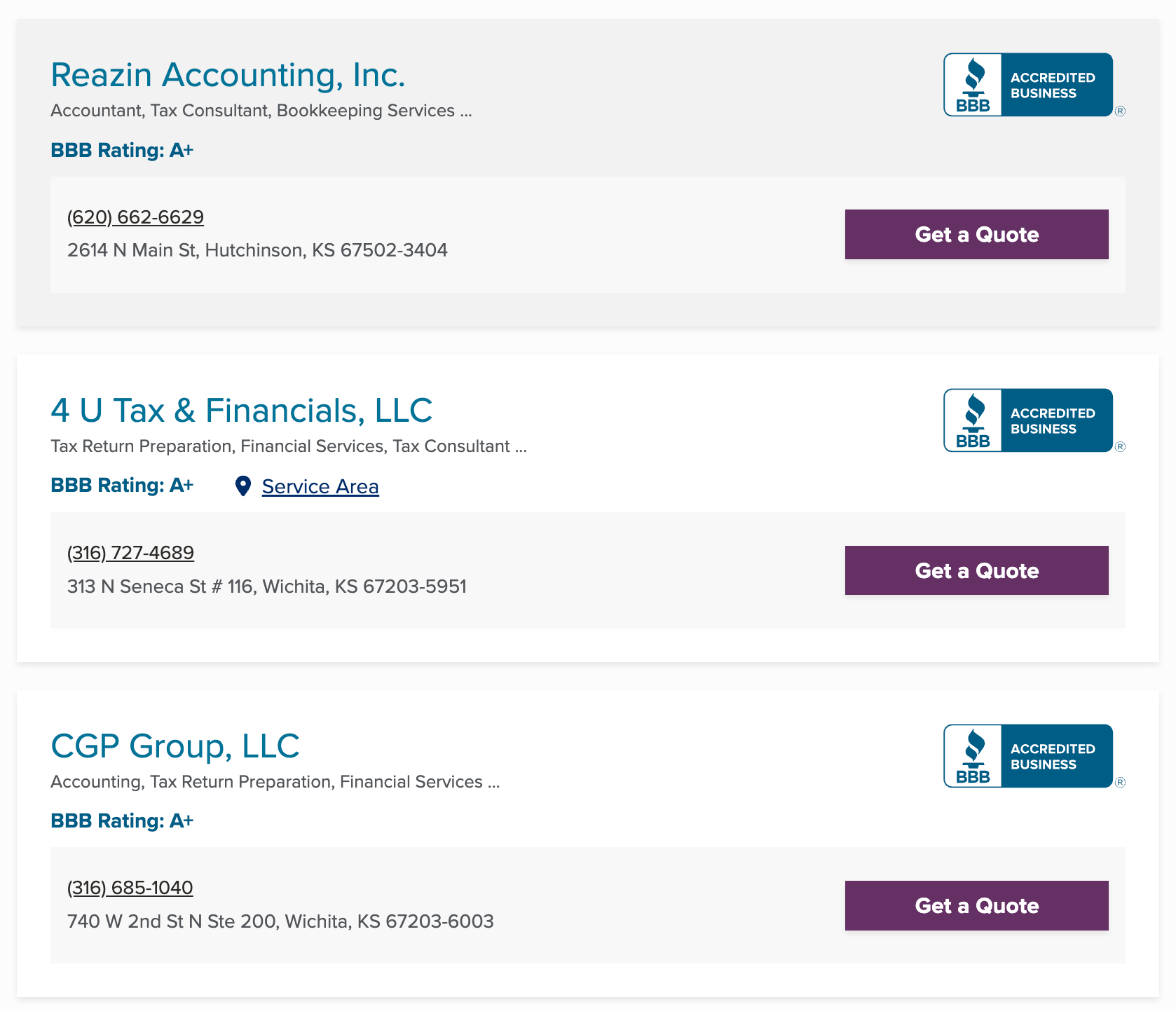

Once your listings are live, don’t stop there — get proactive. Ask satisfied clients to leave reviews, and make it easy for them by linking directly to your review pages in follow-up emails or thank-you messages.
Optimize Google Business Profile for each branch
Your Google Business Profile (GBP) is one of the most underrated power plays in local SEO. It’s a free listing that shows up in both Google Search (in the so-called local pack or map pack) and Maps, and most of the time it outranks even the biggest aggregators.
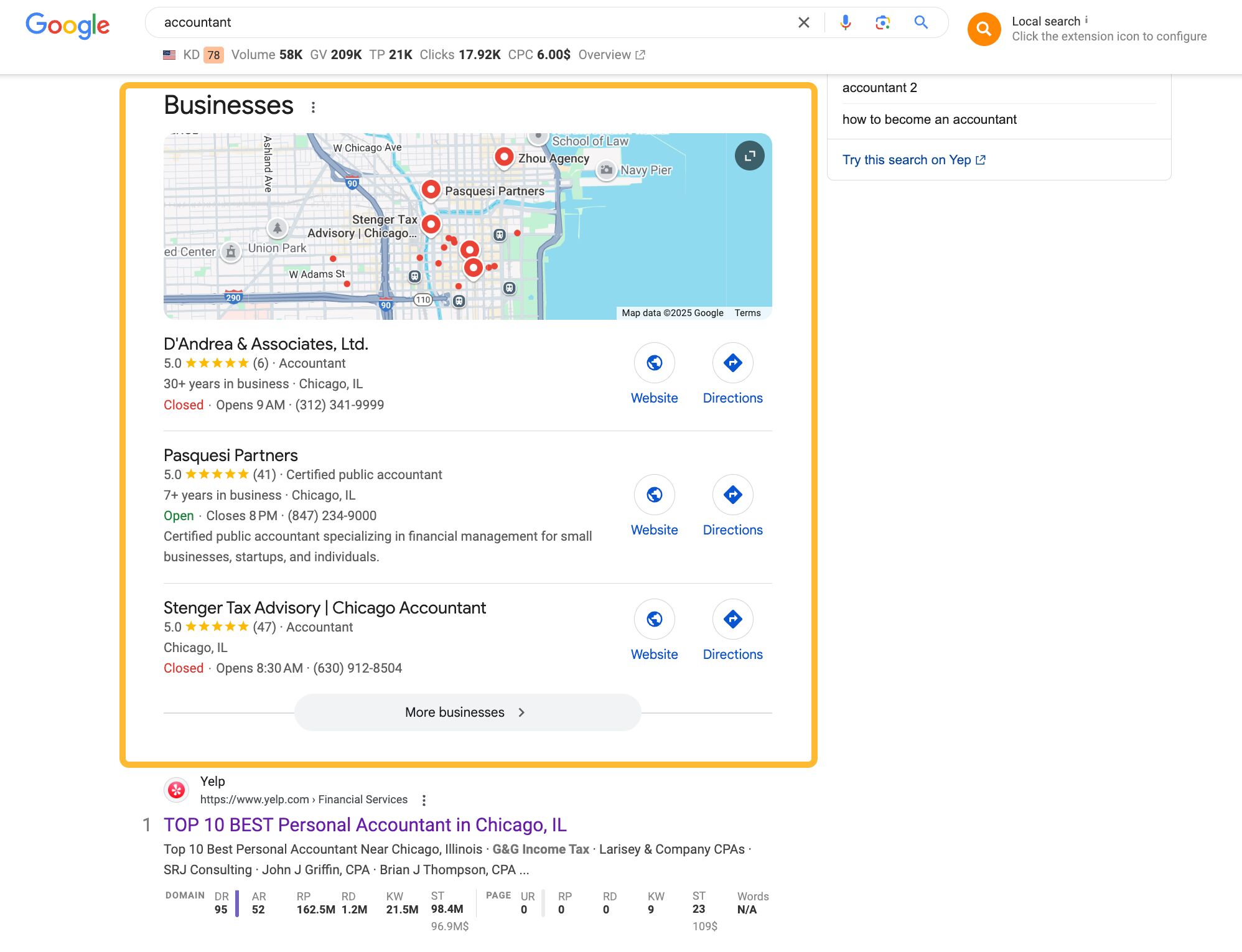

If you’re a local financial advisor, credit union, or regional lender, this is one of your best opportunities to punch above your weight and outrank national competitors. A well-optimized GBP gives you front-and-center visibility, especially for high-intent searches like “financial planner near me” or “best mortgage rates in [city].”
And if you list all your branches separately, you can even double dip on some search terms, like this tax advisory:


Even if someone hears about your firm through a referral or paid ad, they’re probably Googling you before reaching out. What they see in your GBP listing — reviews, photos, services, and how (or if) you respond to comments — can make or break the decision to contact you.
Three fundamental tips to optimize your GBP listing(s):
- List each of your branches separately.
- List all services you offer, amenities, and features that may be important to your customers.
- Encourage positive reviews.
- Use the photos feed to showcase who you are and how you work.


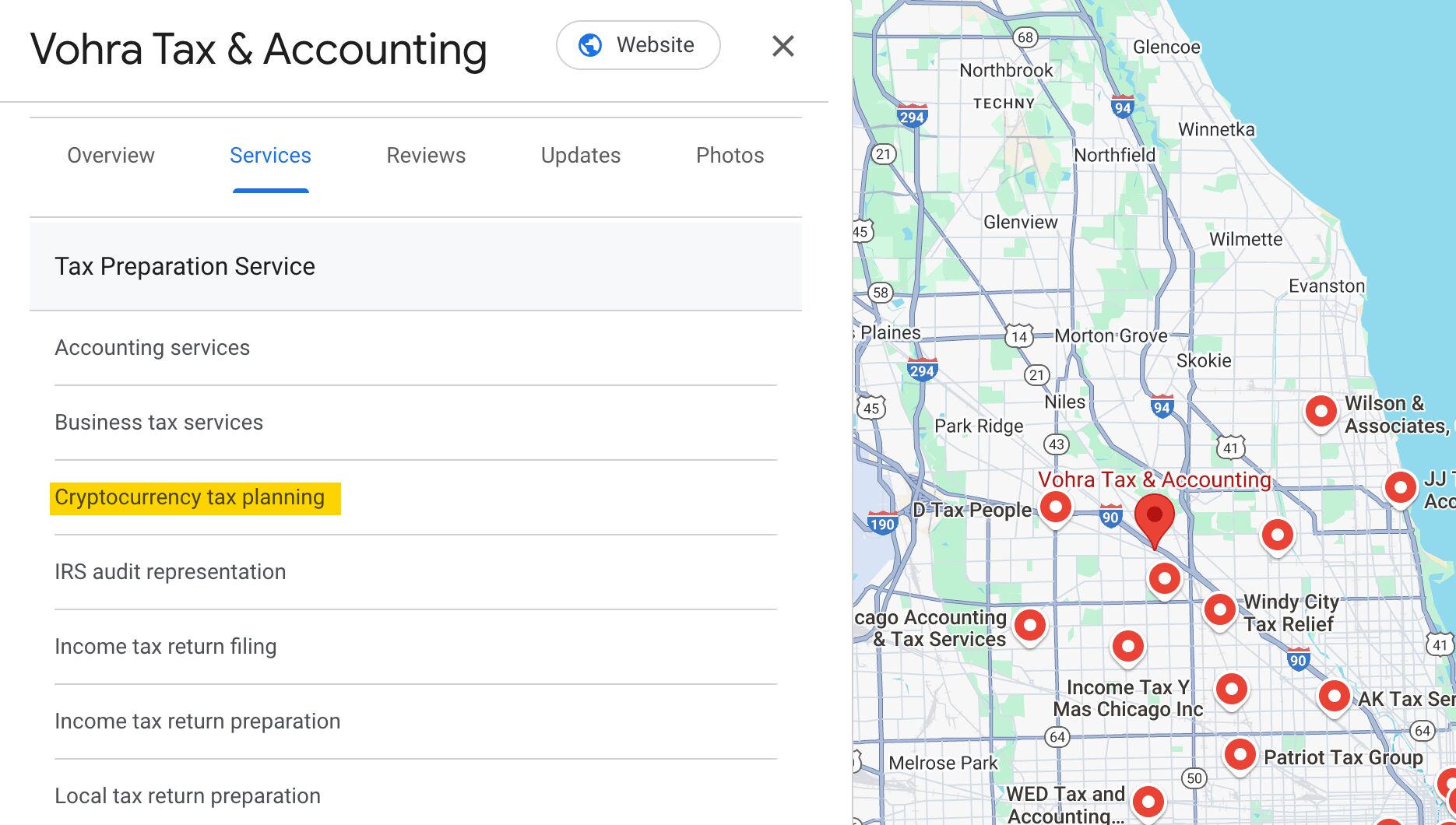

Further reading
Extend your reach through social
Social media might not directly boost your rankings, but it absolutely supports your content by amplifying, driving referral traffic, and building trust with users. It can also earn you more backlinks.
It’s something we do at Ahrefs all of the time.
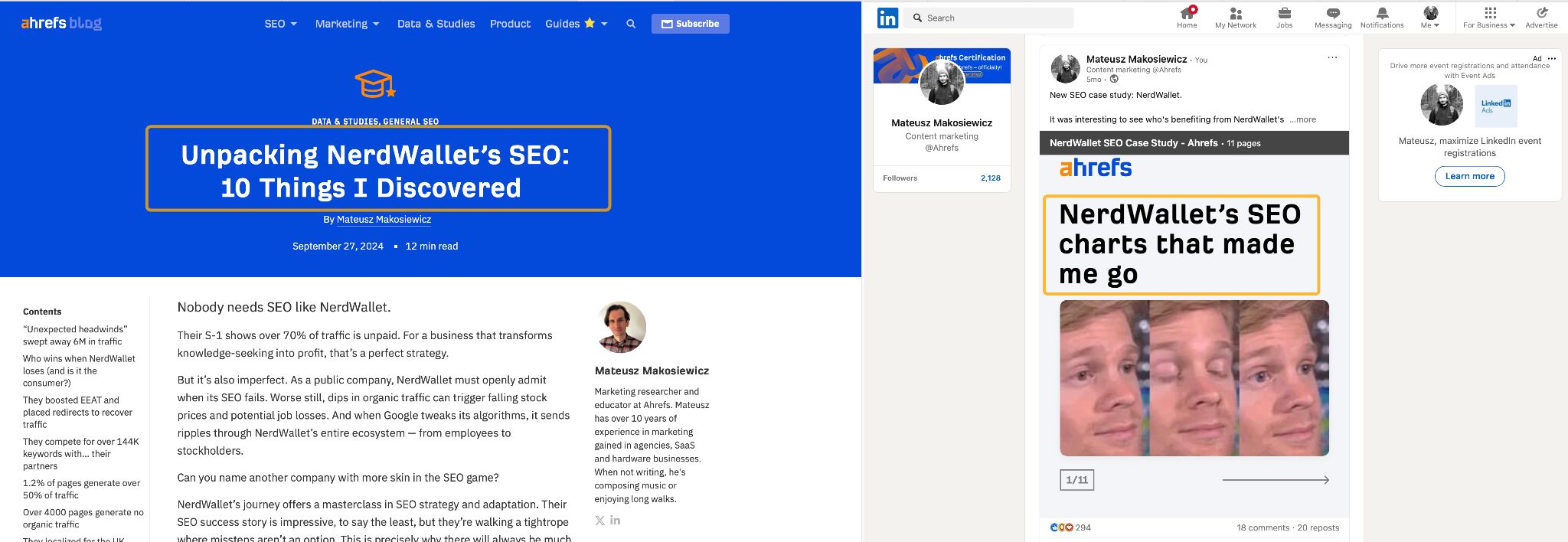

Use social to:
- Promote new blog posts, guides, and tools.
- Share commentary on news and trends (especially if you’re in fintech or investments).
- Highlight client success stories (with their permission, of course).
- Repurpose high-performing content into bite-sized tips or visuals.
- Build authority by featuring your team’s expertise — video Q&As, quotes, and thought leadership.
- Test messaging before scaling it to your site. If something resonates on social media, that’s a strong signal that it could work as long-form content.
YouTube can also be a major SEO asset because Google often shows video results right on page one. Certain keywords trigger YouTube snippets in the SERPs, and this may be your opportunity to jump the line:
You can find these keywords using the SERP features filter in Keywords Explorer.
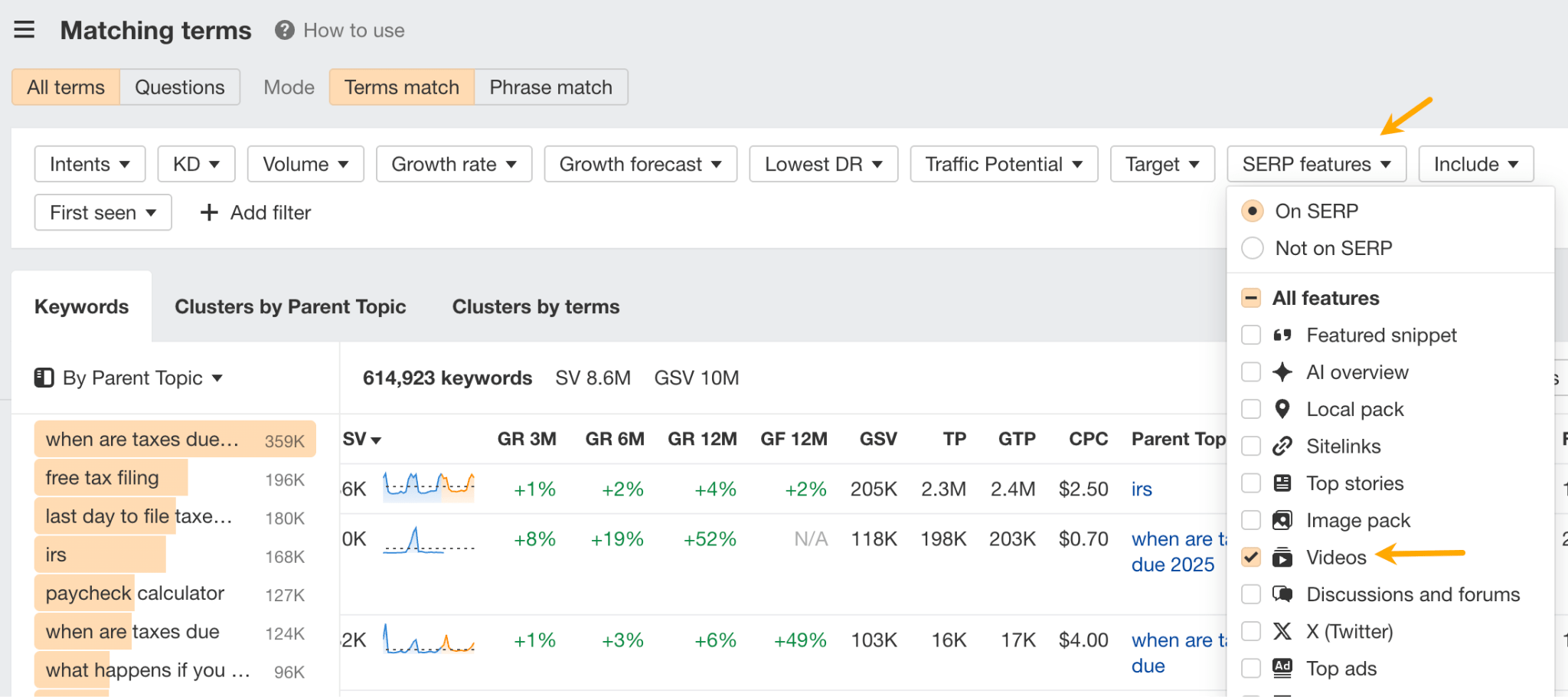

Tip
Check out our new Brand Radar tool. It can look through all keywords and Google AI overviews for mentions of your brand products and also competitors and give you a picture of your market share. Free on all plans while in Beta.
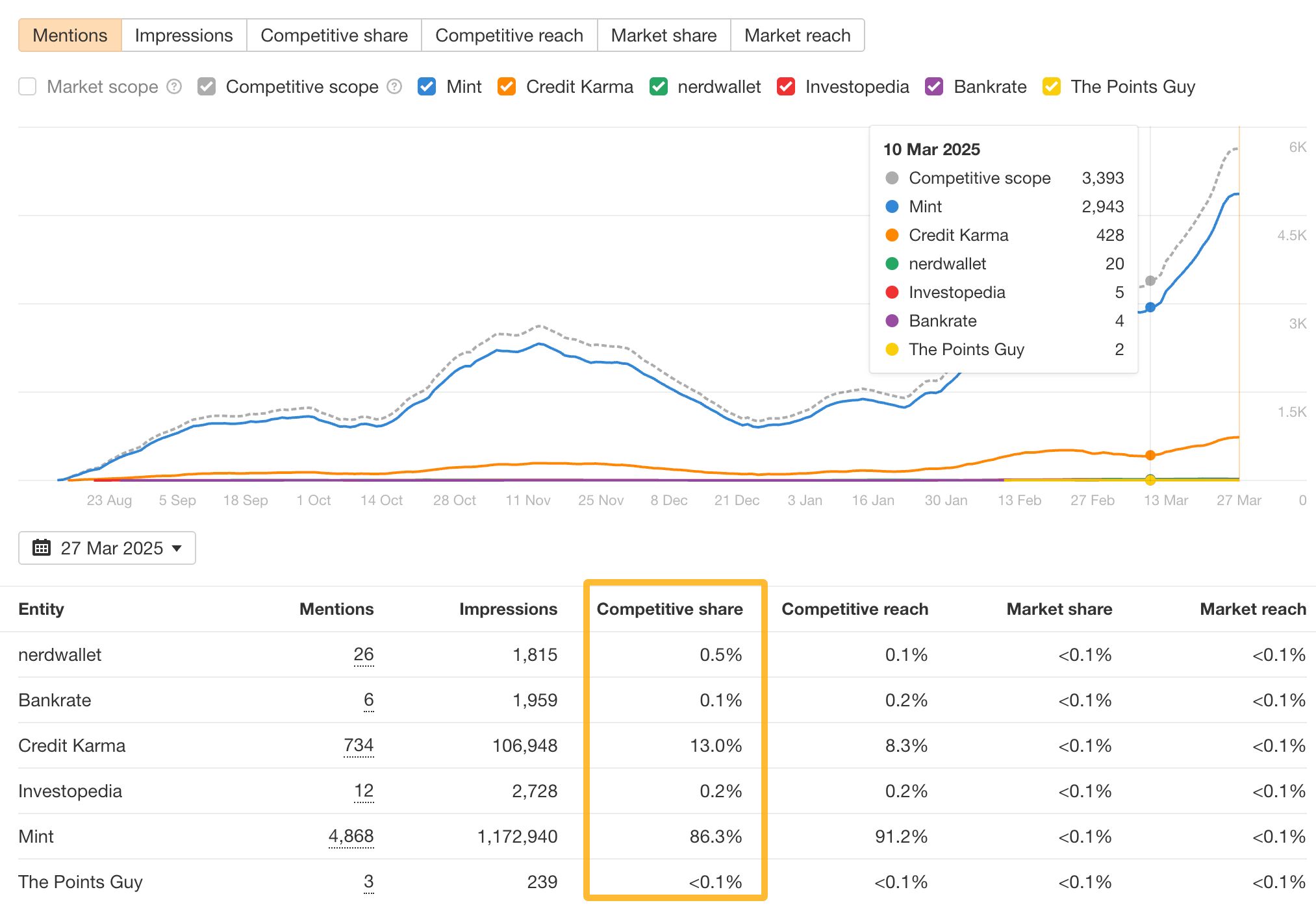

My sources also mention that it’s a good idea to track user engagement signals. I have to admit I used to be skeptical about those metrics having a big stake in SEO, but I’m seeing more and more evidence (like this recent video from Google’s Office Hours) that this may be the case.
So, it might be a good idea to use metrics like visit duration, return visits, bounce rate, and scroll depth to gauge whether your content is actually resonating. If you’re seeing unusually low engagement, this may be a sign your content doesn’t match the search intent and could soon fall in rankings.
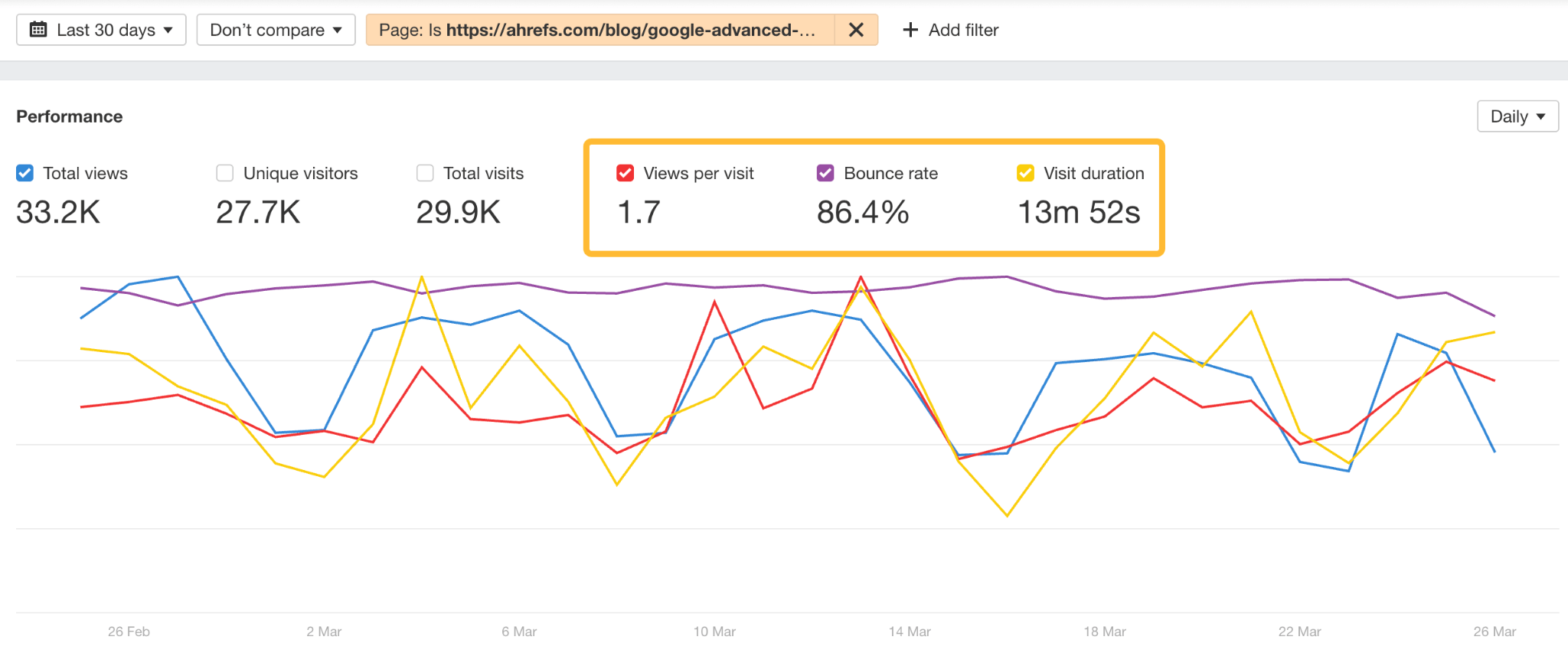

Final thoughts: how to prepare for future search changes
Even with all the tactics in place, I was curious: is it possible to futureproof your SEO strategy? To get consistent free traffic despite AI overviews and constant algorithm changes?
According to the experts I interviewed, the answer is yes:
- Double down on helpful, high-quality content. This hasn’t changed — and probably won’t. The best way to win in search is to create genuinely useful content that answers your audience’s questions better than anyone else. Be the source people trust so much they stop searching.
- Build direct audience relationships. Don’t put all your eggs in the search traffic basket. Case in point: our latest research by Louise Linehan — definitely worth a read. Grow your owned channels: email lists, social media, Slack groups, community forums, whatever fits your brand.
- Stay on top of compliance. Financial regulations change all the time. What’s compliant today might be outdated tomorrow. Align your content with current rules in every market you serve, but build systems that make it easy to review and adapt.
Got questions or comments? Find me on LinkedIn.
Similar Posts

The Unexpected Roles of Web Designers
Job titles aren’t always accurate. They don’t tell you the little details of what goes into…

Learn How to Build a WordPress Block Theme Style Variation
WordPress block themes offer plenty of flexibility. You can make style and layout changes within your…

Selling digital products in California? Read about AB-2426
If you sell digital products — like software, streaming content, or other intangible goods — to…

30+ Best Business Card Templates for InDesign in 2025
Even in the digital age, business cards continue to play a hugely important role in professional…

How to Redirect a Domain to Another Domain: Domain Name Forwarding Explained
Read this article to learn all about how to redirect one domain to another. If you…

Unlocking Conversion Rate Optimization (CRO) Insights: The 2024 H1 Benchmarks
Conversion rate optimization (CRO) might sound like marketing jargon, but at its core, it’s about one…


